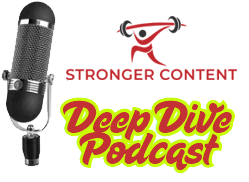MAY NOT BE REPRODUCED WITHOUT PERMISSION

While companies are trying to control their supply chains and manage their freight costs, one of the biggest challenges remains in last-mile logistics. Getting goods to the last mile continues to be a huge pain point.
Yet, changing consumer behavior and free delivery options have only added fuel to the fire. With online giants such as Amazon and Walmart offering free shipping and same-day delivery options, it’s set up consumer expectations that are forcing retailers to redefine their logistics.
Getting goods from companies to warehouses and store shelves happen over predictable routes which allow for efficient operations. That last mile, however, is often the most expensive and time-consuming part of the entire shipping process. The final journey of a shipment typically means manual unloading and doorstep delivery, multiple stops, and often chaotic routing. Last-mile tracking is often inconsistent because of the variables involved. In cities, traffic congestion often plays havoc on delivery schedules, suburban deliveries can be spread out requiring more time, and rural deliveries can take drivers miles off the beaten path.
A study by Business Insider pegged the cost of last-mile delivery at 53% of the total shipping costs.

Consumers, now expecting free shipping, are increasingly unwilling to pay delivery fees. That puts the burden on shippers and logistics partners to absorb the cost or find more efficient processes to reduce expense.
At the same time, more goods are being shipped than ever. More than three-quarters of businesses surveyed anticipate shipping volume to continue to rise to record levels in 2022. While inflationary concerns and decelerating economic growth may slow sales, analysts still predict modest increases in retail sales. Still, the acceleration of eCommerce and home delivery is becoming a larger share of the market.
Dynamic Routing and Dynamic Pricing?
UPS has equipped many of its delivery trucks with its On-Road Integrated Optimization and Navigation (ORION) platform to automatically create dynamic routing to reduce driver miles. Based on changing conditions, routes are constantly analyzed and optimized for optimal routing.
Many are wondering if a move towards dynamic pricing for last-mile carrier delivery might be on the horizon.
That could change the dynamics of last-mile logistics. Shippers would need to be more flexible on rates. Shippers would need a robust and reliable transportation management system (TMS) with strong analytics to manage and forecast rates accurately.

Without a TMS, it would be overwhelming to keep track of rates, last-mile tracking, and contract compliance by carriers. While dynamic pricing may eliminate some of the seemingly endless surcharges that companies like UPS and FedEx tack on, these fees will likely be folded into pricing algorithms that more closely mirror capacity, demand, lane pairing, and last-mile delivery.
Autonomous Vehicle and Drone Solutions for Last-Mile Delivery
Companies are also looking to futuristic solutions, such as autonomous vehicles and drone delivery, to reduce last-mile costs. Google has partnered with FedEx and Walgreens on drone deliveries. UPS has teamed up with CVS Pharmacy. Walmart has filed more drone patents over the past few years than almost any other company.
Mitsubishi, Nuro, Segway, and Uber-spinoff Serve Robotics are all backing autonomous vehicle delivery, especially focusing on congested urban areas where wait time adds to costs. Walmart is using Gatik’s self-driving trucks to make deliveries in some Canadian cities. Amazon, FedEx, and UPS are all pursuing autonomous vehicles for last-mile logistics as well.
As these emerging technologies become more prevalent, they can also create significant fluctuates in pricing for last-mile delivery. Shippers will need to watch rates and carefully plan logistics even more carefully. With more options than ever before, more systems and vendors to onboard, and last-mile tracking and pricing becoming more complex, TMS solutions become even more essential.
With new options, including crowdsourced last-mile delivery services, shippers and brokers will need to be able to track more sources to manage costs.
The Growing Need for Logistics Planning and Optimization
Companies trying to manage all of these complex logistics with paper and spreadsheets are already struggling to keep up with fluctuating prices, fuel costs, and diminished shipping capacity. As things grow more complex, shippers must invest in real-time data for logistics planning and optimization. Plus, everything has to work together seamlessly. Integrating your logistic management platforms with existing business systems is crucial to automating as much of your supply chain as possible from procurement to last-mile delivery.

